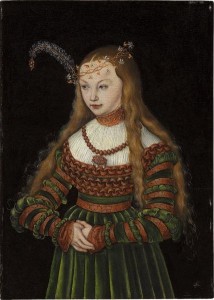Although his crimes were for love and not for money, Stéphane Breitwieser is considered one of the most notorious art thieves in the world — addicted, determined, and unashamed of his crimes.

photo: Jef-Infojef {CC BY-SA 2.5}
French art thief Stéphane Breitwieser stole works valued at $1.4 billion, but not for the standard reasons.
When you think of a high-dollar art heist, you might imagine a Hollywood caper movie, starring a suave conman who steals for profit and glory. For this role, Stéphane Breitwieser would be entirely miscast. He was one of a kind: a modest man who stole for his love of art.
A Love of Art, a Life of Crime
While working as a hotel waiter and kitchen-hand in Basel, Breitwiser, then in his 20s, spent his time off casing art auctions and small galleries around Europe for poorly guarded paintings he liked.
He committed his first known art theft in 1995 while visiting a medieval castle in Bonn, Germany. With his accomplice and girlfriend Anne-Catherine Kleinklauss keeping watch, Breitwieser carefully slid out the nails of a frame containing a painting by Christian Wilhelm Dietrich. He then slipped the painting under his jacket and left the castle, taking the piece home with him.
He went on to steal more than 200 museum-quality pieces from dozens of galleries, museums, and churches in seven countries. While his girlfriend watched for security guards or created a scene to grab their attention, he pilfered artworks with an estimated value of US$1.4 billion. The most expensive single piece was Sybille, Princess of Cleves by Lucas Cranach the Elder, with an estimated value of £5-5.6 million.

Breitwieser was no ordinary art thief. He didn’t plunder Europe’s galleries and private collections for profit; he stole to satisfy his desire for a vast personal collection of art. He was a self-proclaimed art connoisseur, who loved art as a child and focused his efforts on works from his favorite period, the 16th-18th centuries.
He “didn’t just go to museums to steal,” he told The Guardian in 2005. But if he happened upon a beautiful work with “magnificent blue sky and wonderful people” and a porous security environment, he would seize the opportunity. “It was the beauty of the work of art that interested me,” he explained.
Caught Red-Handed, but Undeterred
Breitwieser and Kleinkauss were caught in action in 1997, as they left a private gallery with a landscape piece by William van Aelst. The pair had been given special permission to visit the gallery by its owner, who chased the pair to Breitwieser’s mother’s car upon realizing that the painting had gone missing.
Authorities also found another stolen piece in the car, but as it was only Breitwieser’s first offense in Switzerland, he was given an eight-month suspended sentence and banned from entering Switzerland until the turn of the millennium.
Despite his brush with prosecution, Breitwieser continued to steal art, and even tried his luck by stealing pieces from museums that he had targeted before.
Although he’d ridden a long wave of good fortune, Breitwieser’s luck ended in November, 2001, when he was caught leaving the Richard Wagner Museum in Switzerland with a bugle dating back to 1584. The bugle was one of only three of its kind, and had a value of £45,000. Breitwieser tried twice to steal the bugle—the first time, he was spotted by the security guard as he left the museum.
”It was the beauty of the work of art that interested me.” —Stéphane Breitwieser
Two days later, a local journalist (who knew of Breiwieser’s previous attempt) spotted the thief casing the same museum and alerted security.
The police swiftly arrested Breitwieser and, as part of the investigation, applied for an international search warrant to enter Breitwieser’s mother’s house in Strasbourg. Breitwieser later confessed to the thefts, giving a detailed itinerary of the works that he had stolen to the authorities.
Surprisingly, the authorities found nothing there, except for the cord from the stolen bugle. Although Brietwieser’s mother, Marielle Schwengel, later claimed that she destroyed most of the art pieces out of anger at her son, police instead believed that she did so to hide evidence of his crimes.
Schwengel shredded some of the paintings and threw them into the trash. Other works, such as pottery, jewels, figurines, and a 17th century crossbow, she tossed into the Rhone-Rhine Canal. Schwengel later confessed to the destruction of the pieces after some of decorative items washed up on the Rhine’s shores.
Behind Bars
Following the investigation, Breitwieser served two years in Switzerland before being extradited to France. In a Strasbourg court in January 2005, he was then sentenced to three years in prison, but served just 26 months. The day before the sentence, he attempted suicide by hanging, but was stopped after another inmate alerted guards to his intent.
Marielle Schwengel was sentenced to three years for destroying the pieces, but served only 18 months, and Anne-Catherine Kleinklauss received an 18-month sentence for receiving the stolen items. She served six months.
Following the case, 110 of Breitwieser’s beloved artworks were recovered, whilst 60 remain unaccounted for. Others were certainly destroyed by Schwengel, and authorities believe that that she also destroyed the 60 “lost pieces.”
“Never have so many old masters been destroyed at the same time,” a Strasbourg policeman told The Guardian. “The works can never be replaced.”
About the Author:
Alex Gillham is a writer for LBS who loves reading about crime and security.
Sources:
“Court jails art thief, girlfriend and mother” —Amelia Gentleman, (The Guardian)
“Priceless art haul destroyed by thief’s mother” —Jon Henley, (The Guardian)
“The Artful Dodgers” (The Sunday Times)
“Art ‘collector’ arrested” —Alan Riding, (NYTimes)


